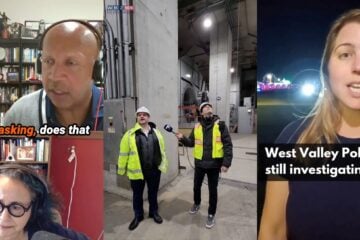New digital offerings from NPR, PBS promise closer look at how users consume content
New digital offerings from NPR and PBS aim to give public media additional platforms for building online audiences while gaining insights into how listeners and viewers interact with digital content.
These digital initiatives — PBS’s Membership Video on Demand service and NPR’s long-awaited NPR One app — were demonstrated and discussed during the Public Media Development & Marketing Conference in Denver July 9-12.
The frequent name-changes for NPR’s mobile app during its development — it has been variously referred to as “Project Carbon,” “Infinite Player” and “MPX” — prompted laughter among PMDMC attendees when recounted by Zach Brand, NPR’s v.p. of digital media. But the roulette wheel has stopped, and the name NPR One is now locked in.

A screenshot of NPR One, as it appears in beta-testing form.
The app, which will be released in a soft launch later this month, uses an algorithm and user feedback to create an audio stream fusing NPR content with newscasts and segments provided by stations. When a user first launches NPR One, it uses geolocation to find the nearest NPR station, in a fashion similar to how station localization works on NPR.org. If they prefer, users can also choose a station.
In playback mode, the app rolls a welcome message and station ID before launching the stream of local and national content. Listeners can indicate which segments they like, and the algorithm will tailor content to their preferences.
The content stream will include national sponsorship credits and prompts to donate to stations; local underwriting credits will be introduced later this year. Donation prompts include voice-interactive messages powered by a collaboration with XAPPmedia. The app will prompt a user to support the selected local station. An affirmative response will send users to a station’s pledge page.
Only stations that buy services from NPR Digital Services will be represented on NPR One. Uploading of the station ID, podcasts and station newscasts will go through a website for stations, and NPR’s Core Publisher and API will handle intake of segments.
NPR will launch the app July 28 in Apple and Android app stores but will delay a marketing push until the fall, after station pledge drives.
The app is a work in progress, said Tim Eby, g.m. of St. Louis Public Radio, during a PMDMC session. Stations will need to adjust their workflows to work with NPR One, such as by segmenting content.
“This thing is full of minefields we’re all going to have to work through,” Eby said. “We’re going to have to work through it as a system.” One problem he cited is the app’s limitation on segment length: It can handle pieces of roughly five minutes. That cap might discourage stations from producing longer pieces, he said.
Despite these difficulties, PMDMC participants described NPR One as a vital part of public radio’s mobile strategy.“We live in an on-demand world,” said John Davidow, executive editor of wbur.org. “This gets us into cars and well ahead of where we would be otherwise.”
About 40 percent of WBUR’s web traffic comes from mobile phones, he said. The station expects that figure to reach 50 percent by the end of the year.
Davidow expressed concerns about the business practices supporting NPR One, including the handling of national ad sales, revenue splits and on-air fundraising. And he added, “How do you locally brand something called ‘NPR One’?”
Even though answering such questions will be “painful,” Davidow said, he believes that NPR One will benefit the system.
“We’re disrupting ourselves,” Davidow said. “But otherwise we do it or someone else is going to come along and eat our lunch. We might as well control our own destiny.”
“The alternative is to do nothing, and that’s not really an alternative,” added panelist Nico Leone, g.m. of KCUR-FM in Kansas City, Mo.
Tracking audience usage
In addition to providing a means for growing digital audiences, NPR One and PBS’s upcoming MVOD platform also promise opportunities for gathering data about viewer and listener habits. Stations now have little insight into how listeners are using audio, said Tim Olson, v.p. of digital media for dual licensee KQED in San Francisco.
Online platforms allow listeners to access “a good percentage of public radio content already,” Olson said, “and we don’t know anything about the people using it.”
Slated for launch in spring 2015, PBS’s MVOD service will offer thousands of hours of PBS programming on-demand for station members. While it will initially be accessible only to viewers who already donate to pubTV, stations will later be able to use it as an enticement for new members.
Due to its streaming agreements with partners such as Netflix and Amazon, PBS will offer MVOD only to members who give at least $50 annually, according to Olson. When complete, MVOD will be integrated with PBS’s COVE video platform.
Tailoring MVOD to recognize members has been time-consuming, said Tom Davidson, PBS’s senior director of digital. MVOD relies on a two-part sign-in process that first ensures a viewer is registered with PBS, then matches the viewer’s email with a “membership vault” to validate membership.
A major benefit of MVOD is that it will give stations insights into how their members interact with content, Davidson said.
“The endgame of MVOD isn’t being able to say, ‘Here’s 3,000 hours of content to watch,’” Davidson said. “That’s important, but the endgame is data. We can capture information about what’s being watched and use that for fundraising and programming.”
MVOD will even allow stations to target on-demand content for members only, Davidson said, providing opportunities for more donor perks.







